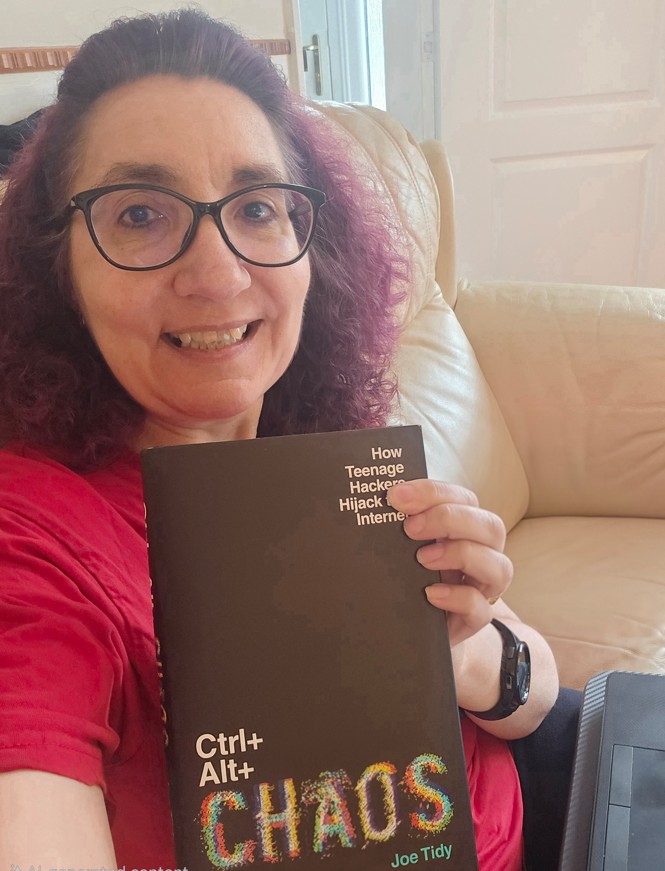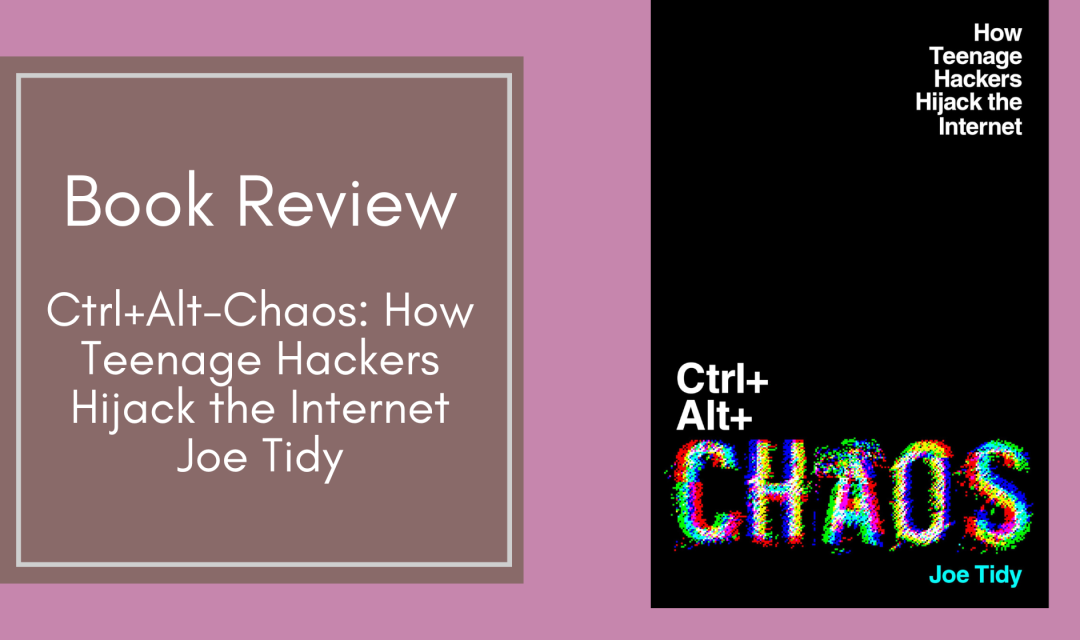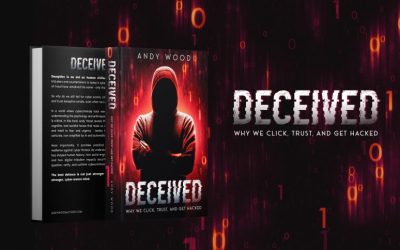by Lisa Ventura MBE FCIIS
Chief Executive and Founder, Cyber Security Unity
Author: Joe Tidy
Publisher: Elliott & Thompson
Publication Date: June 5, 2025
Print Length: 256 pages
Rating: ★★★★★
As someone who has spent over 16 years in the cyber security industry has witnessed firsthand the devastating impact of cyber-crime on individuals and businesses alike, I approached Joe Tidy’s debut book with both excitement and trepidation. The BBC’s cyber correspondent has carved out a reputation for getting closer to the action, and “Ctrl+Alt+Chaos” delivers exactly what you’d expect from someone with such unparalleled access to the dark digital underbelly.
The Human Story Behind the Hackers
What strikes me most powerfully about Tidy’s narrative is how he humanises what many of us in the industry see as faceless threats. The book centres around Julius Kivimaki, better known by his handle “Zeekill,” and follows his journey from a 12-year-old with too much time and talent to arguably one of the most despised cybercriminals in history. The Vastaamo psychotherapy hack that Kivimaki orchestrated, blackmailing 30,000 vulnerable patients with their stolen mental health records, represents a level of cruelty that shocked even the most hardened in the cyber cyber security community.
But Joe doesn’t just give us another “look how terrible hackers are” story. Instead, he peels back the layers to show us how these young men are created, nurtured, and eventually turned into digital weapons. It’s a sobering reminder that behind every devastating attack, there’s often a teenager sitting in their bedroom, disconnected from the human consequences of their actions.

The Gangs and Their Legacy
The book’s exploration of groups like LulzSec, HTP, UG Nazi, and Lizard Squad reads like a digital true crime saga. Joe’s exclusive interviews with both the hackers and the law enforcement officers pursuing them provide a balanced perspective that many cyber security books don’t have. As someone who has worked extensively on raising awareness about social engineering and the human factors in cyber security, I found his insights into how these groups recruit and radicalise young people particularly valuable.
It is clear how normalised this behaviour has become in certain online spaces; these aren’t criminal masterminds operating from shadowy basement, they’re kids who’ve found community and validation in causing chaos. It’s a wake-up call for parents, educators, and yes, those of us working in cyber security who sometimes forget that prevention starts long before someone enters the industry.
Technical Accessibility Meets Human Impact
One of Joe’s greatest strengths is his ability to make complex cyber security concepts accessible and easy to understand for those who might not be as knowledgeable about cyber security as many of us are who come from a cyber security background. As someone who regularly speaks to non-technical audiences about cyber threats, I appreciate how he manages to explain the technical aspects of these attacks whilst keeping the focus firmly on their human impact. You don’t need a computer science degree to understand why Kivimaki’s actions were so devastating, and you’ll come away with a much clearer picture of how modern cyber-crime operates.
A Mirror for Our Industry
Reading “Ctrl+Alt+Chaos” forced me to confront some uncomfortable truths about our industry. We’re brilliant at developing sophisticated security tools and frameworks, but we’re still struggling with the fundamental human elements that make these attacks possible in the first place. The book serves as a big reminder that technological solutions alone won’t solve our cybersecurity crisis, we need to address the social, psychological, and cultural factors that create these threats. And this is something I talk about and raise awareness of constantly, along with getting the younger generation interested in careers in cyber security while they are at school and college.
Joe’s question of “how can we stop the cycle of teenage boys hijacking life online?” is one that should keep every cyber security professional awake at night. It’s not enough to patch vulnerabilities and monitor network traffic when the real vulnerability lies in disaffected young people who’ve found purpose in causing digital mayhem.
Final Thoughts
“Ctrl+Alt+Chaos” is an important addition to the cybersecurity literature, one that I’ll certainly be recommending from now on. It’s a book that will resonate with cyber security professionals, law enforcement, educators, and parents alike. While it occasionally reads more like journalism than analysis (let’s not forget that Joe is the BBC’s cyber security correspondent, after all) his unique access to his subjects makes this an invaluable resource for understanding how modern cybercrime really works.
The book serves as both a warning and a call to action. We can’t simply react to these threats as they emerge, we need to understand their root causes and work proactively to address them. As someone who’s spent years advocating for better cyber security awareness and the importance of diversity and inclusion in our industry, I see this book as essential reading for anyone who wants to understand the human side of the cyber threat landscape.
It’s not always an easy read though. The casual cruelty of some of these attacks, particularly Kivimaki’s targeting of vulnerable patients, is genuinely disturbing. But that discomfort is precisely why we need to engage with these stories. Until we truly understand what we’re up against and who we’re fighting, we’ll always be one step behind.
Recommended for: Cyber security professionals, IT leaders, educators, parents of teenagers, and anyone interested in understanding the human psychology behind cyber-crime.





